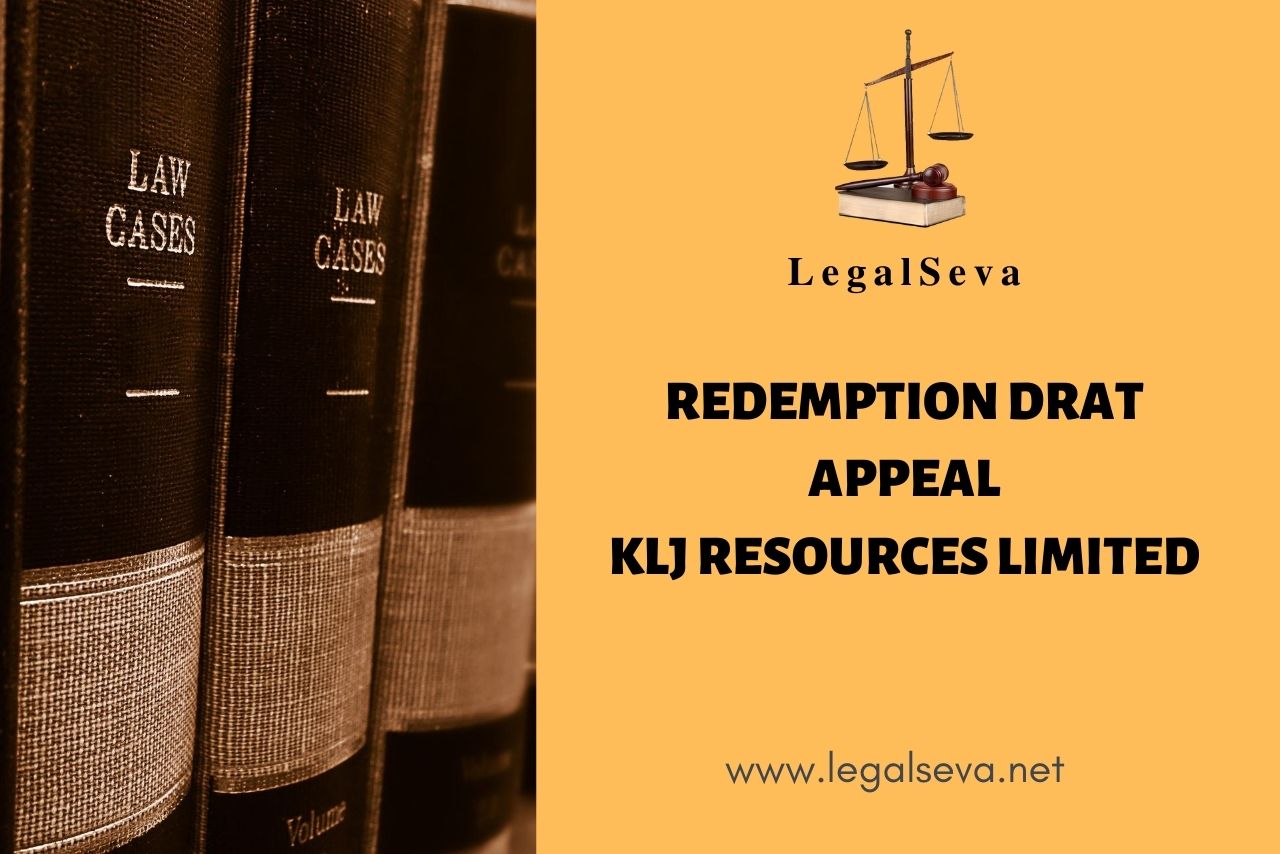When borrowers cannot pay promised interest or principal on time, creditors can initiate steps to recover debt. Bankruptcy laws determine the process by which recovery proceeds. This note describes and discusses some features of the recovery process in India, focusing on debt recovery tribunals (DRTs) and debt recovery appellate tribunals (DRATs). We touch upon the related SARFAESI Act and the 1985 SICA Act, but notably do not discuss corporate debt restructuring, which is the subject of other research.
Also Read- DRT Chandigarh Procedure
The Narasimham committee recommendations led to the enactment of the Recovery of Debts Due to Banks and Financial Institutions Act (RDDBFI), 1993. The Act established two types of agencies, Debt Recovery Tribunals (DRTs) and Debt Recovery Appellate Tribunals (DRATs) and conferred upon them special powers for adjudication of debt recovery matters. Thus, the earliest establishment of DRTs as institutional entities to resolve bankruptcy occurred in 1993. The first DRT was formed in Calcutta (now Kolkata) on 27th April 1994.
DRT is constituted under Recovery of Debts due to Banks and Financial Institutes Act, 1993. This Act provides speedy recovery for Banks and Financial Institutes unlike Civil Court and other forums. Debt Recovery Tribunal is a specially created forum for fast and speedy recovery of debts due to Banks and Financial Institutions.
Also Read- CONDONATION OF DELAY PETITION IN DRT CHANDIGARH
This provision enables rationalization and coherence with other bankruptcy legislation such as SARFAESI that specify different amounts and that can also be taken up by DRT. In terms of process, Section 22 (1) of the Act is the operative portion. The Section states that the DRT and DRAT are to be guided by the principles of natural justice. They have powers to regulate their own procedure and in particular are not to be bound by the procedure laid down by the former CPC. Operationally approach to the higher courts is through writ petitions filed at the courts. A law degree is not necessary to argue such cases.
Also Read- Drt and Tenancy Rights: Where the Dispute Lies?
The DRAT has the power to address appeals made against any order made,or deemed to have been made, by the DRT. Section 18 of the Act bars all other Courts in relation to the matters of debt apart from the Supreme Court and High Court, whose authority flows from articles 226 and 227 of the Indian Constitution. The bottom line is that relief against a judgment of DRAT can be sought only from the High Court and the Supreme Court.
In the direct application route, the recommended time to completion is 180 days from the receipt of the application as per Sections 19(4) of RDDBFI. For applications made to DRT under the SARFAESI Act, DRTs are asked to dispose cases within 60 days, with an outer limit of 4 months. If the period exceeds 4 months section 17(6) of the SARFAESI Act entitles either party to the application to make an application to the DRAT to direct the DRT for disposal of the pending application.
Also Read- Can Banks attach Agricultural Land DRT Chandigarh Bench?
An appeal against the order of the DRT can be made to the DRAT within whose jurisdiction the DRT falls. There are currently 5 DRATs in Mumbai, Delhi, Kolkata, Chennai, and Allahabad. The appeal has to be made within a period of 45 days from the order of the DRT, which may be extended by the DRAT. Additionally, the DRAT can be approached for interim relief on interim applications (IA) or miscellaneous applications (MA) which are sub-sections of the original applications.
Appeals to DRAT can be expensive. The aggrieved party that owes the debt must deposit 75% of the amount determined by the order of the DRT. This amount can be reduced or waived by the DRAT. For appeals to DRAT that originate in the SARFAESI Act actions, the deposit is 50% of the amount which is claimed by the secured creditor or the amount as determined in the order of DRT or the, whichever is less. However an important point is that unlike applications under RDDBFI, the deposits cannot be fully waived but only be reduced to 25% of the amount.
Under the DRT, a bank recovers its dues by sale of the asset by publicly auctioning it. It is mandatory for the bank to advertise the auction in the leading newspapers, after mentioning a reserve price. One day is allotted to the potential buyers to examine the asset and verify its documents.
Bidders must deposit a refundable amount called the earnest money deposit (EMD), which could be 15% of the reserve price. Upon winning the auction the successful bidder has to pay the remaining amount within the period determined by the bank. If the bidder is unwilling or unable to pay the remaining amount, the EMD is not refunded. Following the successful bidding of the asset a 30 day cooling period is observed. During this period, an injunction may be sought. For instance, the owner of the asset may argue that the price is lower than expected or there may be lack of proper advertising of the asset. Other bidders could contest the auction on grounds that the bank did not furnish sufficient documents during inspection of the property.
Also Read- Whether DRT or High Court Chandigarh for Payment Default (NPA)
CASE STUDY
DEBT RECOVERY APPELLATE TRIBUNAL, DELHI
Appeal No. 153/2019
Appellate
KLJ Resources Limited
Versus
Respondent
- 1. Fullerton India Credit Company Limited
- 2. Advance Surfactants India Ltd.
- 3. Eman Holdings Pvt. Ltd.
- 4. Mr. Ashutosh Mahindru
- 5. Mr. Ashok Mahindru
- 6. Mr. Pradeep Kumar Lather
Dated: 30.01.2020
CORAM:- Mr. Justice P.K. Bhasin, Chairperson
Appearances:
Ms. Pratiti Rungta, Advocate for the appellant
Mr. Sanjiv Singh and Ms. Ojasvi Sharma, Advocate for respondent no. 1 Mr. Pallav Saxena and Ms. Bindu Das, Advocate for respondents 2 to 5 Mr. A.K. Sharma, Advocate for respondent no. 6
Also Read- NCLT DRT Chandigarh
The appellant has approached this Tribunal by filing this appeal under Section 18 of the SARFAESI Act because the Tribunal below (DRT) has shattered its dreams of acquiring ownership of a piece of land admeasuring 11450 sq. yards. in Village Rajokri, New Delhi-110038, value of which it was claiming to be worth hundred crores odd for a meagre amount of Rs. 15 crores odd.
the Securitisation Application (S.A.) filed by the appellant under Section 17(1) of SARFAESI Act and which is still pending adjudication, gives the background facts leading to the filing of the S.A. and I.A. No. 97/2019 and passing of the order on this miscellaneous application Which is challenged under this court.
Also Read- How to Get Free Legal Advice Online in India
From a reading of the said impugned order of the DRT and the submissions made at the Bar by the learned counsel for the appellant, respondent FI, its borrowers, respondents 2 to 5 and the auction purchaser, respondent no. 6, the position which emerges is that respondent no.1, which is a Financial Institution, had extended facility of crores of rupees to respondents no.2 to 5 herein and to secure the loan re-payment equitable mortgage of the land described by the DRT in the impugned as the ‘property in question’ was created in favour of respondent No.1 FI, the respondent no.1 defaulted in repayment of the lone money their account was declared as an NPA and the proceedings were initiated under SARFAESI Act for recovery of its dues as provided under Section 13(4).
Also Read- Legal Representation or Legal Notice?
In the present case the appellant himself has admitted in the grounds of appeal that he had not even tendered the dues of the respondent no. 1, herein. If the be so, there was no occasion for the appellant to have approached the DRT for a direction to the respondent no. 1, herein to redeem the mortgaged in its favour. If the appellant had first approached the financial institution, respondent no. 1, herein, with a request for redeeming the mortgaged in question by accepting its entire dues from the appellant and if then the financial institution had refused to accept that request, the appellant would have then been entitled to have recourse to its legal remedies. Without crossing that stage, it could not have moved any application before the DRT for seeking such a direction to the respondent no. 1, herein. The appellant does appear to be interest in only putting spokes in the enforcement of its rights under the SARFEASI Act by respondent no. 1, hence, This appeal is accordingly liable to be dismissed with exemplary cost and the same is hereby dismissed with cost of Rs. 1 lacs to be paid to the respondent no. 1, herein. The cost shall be paid to the respondent no. 1 within 2 weeks failing which respondent no. 1 will be at liberty to move an appropriate application before this Tribunal for implementation of the said order of imposition of cost upon the appellant.
Also Read- Securitization Application DRT to Redeliver Possession Back
For case specific advice, please contact Best/Expert DRT Chandigarh Punjab & Haryana Jammu & Kashmir Himachal Pradesh lawyers Advocate in Panchkula Mohali Zirakpur Kharar.
This post is written by Sneha. More on 99888-17966.

